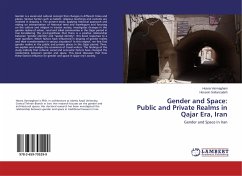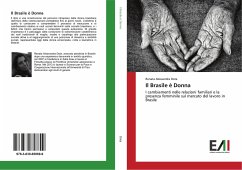
Gender and Space: Public and Private Realms in Qajar Era, Iran
Gender and Space in Iran
Versandkostenfrei!
Versandfertig in 6-10 Tagen
36,99 €
inkl. MwSt.

PAYBACK Punkte
18 °P sammeln!
Gender is a social and cultural concept that changes in different times and places. Various factors such as beliefs, religious teachings and customs are involved in shaping it. The present book, applying historical approach and relying on interpretation of historical texts and travelogues and focusing on the culture and religion in Iranian society, investigates changes in the gender realms of urban, rural and tribal communities in the Qajar period in Iran.Considering this pre-hypothesis that there is a positive relationship between "gender identity" and "spatial identity", this book responses ...
Gender is a social and cultural concept that changes in different times and places. Various factors such as beliefs, religious teachings and customs are involved in shaping it. The present book, applying historical approach and relying on interpretation of historical texts and travelogues and focusing on the culture and religion in Iranian society, investigates changes in the gender realms of urban, rural and tribal communities in the Qajar period in Iran.Considering this pre-hypothesis that there is a positive relationship between "gender identity" and "spatial identity", this book responses to a main question: Which factors have influenced in shaping of gender realms and their transformation in various situations? In this respect, we first find gender realms in the public and private places in the Qajar period. Then, we explain and analyze the comments of travel writers. The findings of the study indicate that cultural, social and economic factors have changed the relationship between gender and space. This book discusses that how these factors influence on gender and space in Qajar era's society.












